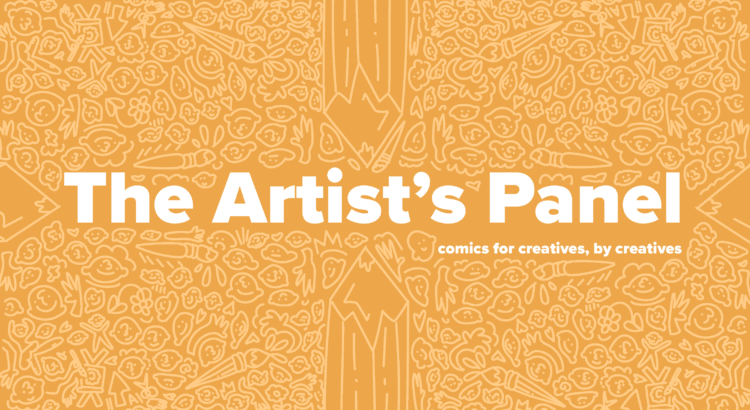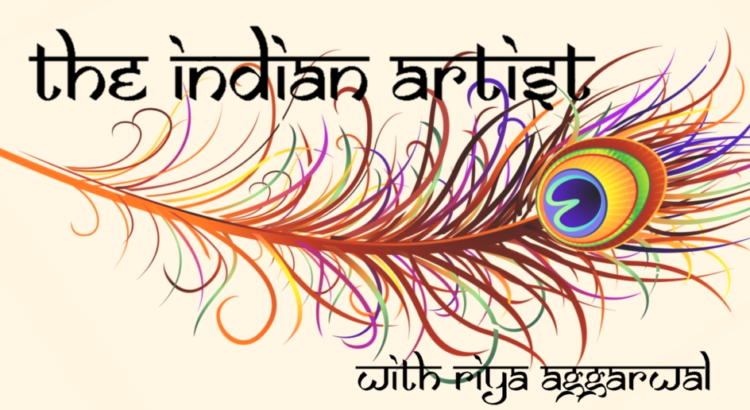Vishnu is one of the most important deities in the Hindu religion. He is known as the preserver and protector of the universes and Hinduism teaches that when humanity is threatened by chaos or evil, Vishnu will descend to Earth his incarnations to restore righteousness. These incarnations of Vishnu are called avatars and it is said in the scriptures that there are ten avatars total. Each of these avatars has a different form and purpose. When an individual is faced with a challenge, a particular avatar shows up to address the issue. In a recent piece done in mixed media from colored pencil, ink, and acrylic, I demonstrate the avatars of Vishnu. For this week’s post, I thought that I would briefly talk about each avatar!
 1) Matsya the Fish: Matsya is said to be the avatar that rescued the first man, as well as other creatures of the earth, from a great flood. Matsya is sometimes depicted as a great fish or as a human torso connected to the tail of a fish. It is said that Matsya forewarned man about the coming flood and ordered humans to preserve all the grains and living creatures in a boat. This story is similar to many stories found in other cultures. Can you think of any?
1) Matsya the Fish: Matsya is said to be the avatar that rescued the first man, as well as other creatures of the earth, from a great flood. Matsya is sometimes depicted as a great fish or as a human torso connected to the tail of a fish. It is said that Matsya forewarned man about the coming flood and ordered humans to preserve all the grains and living creatures in a boat. This story is similar to many stories found in other cultures. Can you think of any?
2) Kurma the Tortoise: Kurma is seen in a mixed human-animal form. The tortoise incarnation relates to a classic Hindu myth where he churns the ocean of milk to obtain treasures dissolved within. In this myth, Vishnu took the form of a tortoise to support the churning stick on his back.
3) Varaha the Boar: Varaha, depicted as either a full boar form or as a boar head on a human body, raised the earth from the bottom of the sea after the demon Hiranyaksha dragged it to the bottom of the sea. After a battle of 1,000 years, Varaha raised the earth out of the water with his tusks.
4) Narasimha the Lion: As the legend goes, the demon Hiranyakashipiu obtained a blessing that he could not be killed or harmed by any means, making him virtually invincible. Arrogant in his security, Hiranyakshipiu began to cause trouble both in heaven and on earth. To put a stop to this, Vishnu emerged in the form of a man-lion known as Narasimha to slay the demon.
5) Vamana the Dwarf: Vamana appeared when the demon king Bali ruled the universe and the gods lost their power. One day, Vamana visited the court of Bali and begged for as much land as he could cover in three steps. Laughing at the dwarf, Bali granted the wish. The dwarf then assumed the form of a giant. He took the whole earth with the first step and the entire middle world with the second step. With the third step, Vamana sent Bali down to rule the underworld.
6) Parasurama: In his form, Vishnu appears as a priest who comes to the world to kill bad kings and protect humanity from danger. He appears in the form of a man carrying an ax, sometimes referred to as Rama with an ax.
7) Lord Rama: As you may remember from my story about Diwali, Rama was sent by the gods to do battle with the multi-headed demon Ravana when he was sent to the forest with his wife and brother for 14 years. He a major deity in the Hindu religion and even considered the supreme lord in some traditions.
8) Lord Krishna: Krishna is one of the most widely revered deities in Hinduism. He was a cowherd who was notoriously known to be a troublemaker in his youth. Krishna is depicted in a variety of forms because there are so many stories surrounding him. Krishna often has blue skin and wears a crown of peacock feathers with a golden loincloth.
9) Balarama, Krishna’s Brother: Balarama, the elder brother of Krishna, engaged in many adventures alongside his brother. Stories of Balarama always focus on his prodigious strength. In visual representations, he is usually shown with pale skin in contrast to Krishna’s blue skin.
10) Kalki the Mighty Warrior: Kalki is the last incarnation of Vishnu. He is not expected to appear until the end of Kali Yuga, the current time period we are in right now. Kalki will come, it is believed, to rid the world of oppression by unrighteous rulers riding a white horse and carrying a fiery sword.
I hope that you all enjoyed reading these brief descriptions and stories of each of Vishnu’s avatars. As always, if anything that I discussed in this post stands out or if any questions arise please feel free to comment and share your thoughts! Looking forward to next Sunday.
~ Riya
Personal website: https://riyarts.weebly.com/










 1) Matsya the Fish: Matsya is said to be the avatar that rescued the first man, as well as other creatures of the earth, from a great flood. Matsya is sometimes depicted as a great fish or as a human torso connected to the tail of a fish. It is said that Matsya forewarned man about the coming flood and ordered humans to preserve all the grains and living creatures in a boat. This story is similar to many stories found in other cultures. Can you think of any?
1) Matsya the Fish: Matsya is said to be the avatar that rescued the first man, as well as other creatures of the earth, from a great flood. Matsya is sometimes depicted as a great fish or as a human torso connected to the tail of a fish. It is said that Matsya forewarned man about the coming flood and ordered humans to preserve all the grains and living creatures in a boat. This story is similar to many stories found in other cultures. Can you think of any?
 For a STAMPS freshman, Victor Luis Garcia already has an impressive list of achievements. He has sat court-side during a Lebron James All-Star game as recognition for his work as an ambassador for low-income aspiring college students, he has had his work on display at SAIC in Chicago, and, just last summer, he was a part of a mural project in collaboration with several renowned Chicago street-artists working to support the BLM movement and the communities where riots were taking place. Victor’s list of accomplishments goes on a lot farther than this, and by looking at his artwork, it is very apparent why. His design and illustration work is impressive and meaningful. He focuses on topics such as LGBTQ identity and intersectionality, and his unique style and thoughtful attention to detail represent these complex issues with elegance. To keep up with the work that Victor is producing and to learn more about his art, you can follow him on Instagram @craboi6.
For a STAMPS freshman, Victor Luis Garcia already has an impressive list of achievements. He has sat court-side during a Lebron James All-Star game as recognition for his work as an ambassador for low-income aspiring college students, he has had his work on display at SAIC in Chicago, and, just last summer, he was a part of a mural project in collaboration with several renowned Chicago street-artists working to support the BLM movement and the communities where riots were taking place. Victor’s list of accomplishments goes on a lot farther than this, and by looking at his artwork, it is very apparent why. His design and illustration work is impressive and meaningful. He focuses on topics such as LGBTQ identity and intersectionality, and his unique style and thoughtful attention to detail represent these complex issues with elegance. To keep up with the work that Victor is producing and to learn more about his art, you can follow him on Instagram @craboi6.

